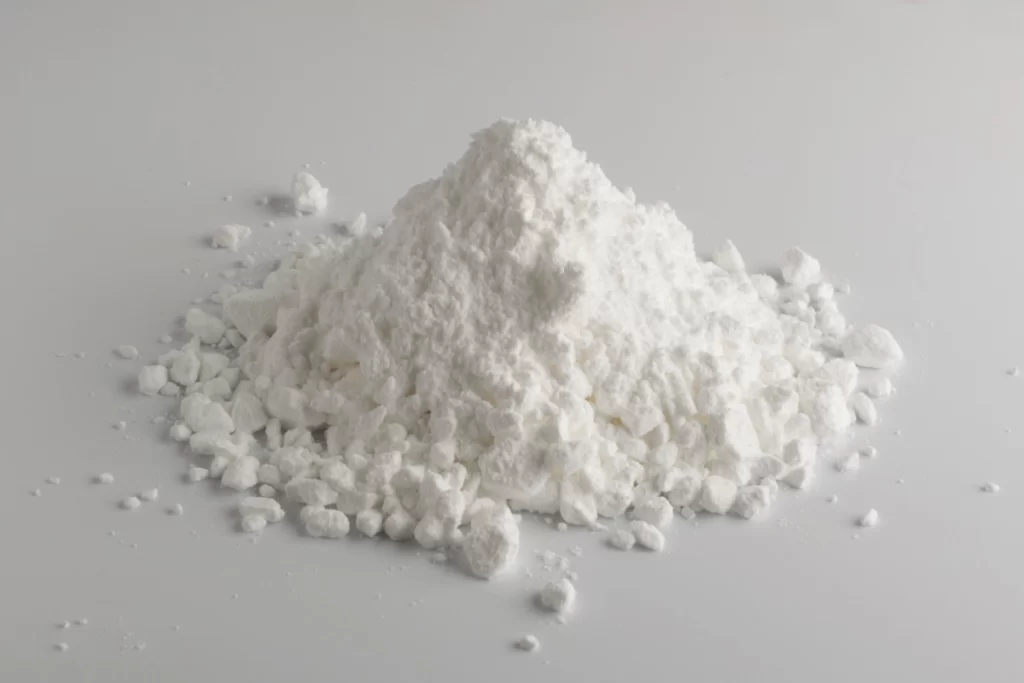Introduction
In the dynamic world of industrial applications, the choice of chemical compounds can significantly influence the quality, efficiency, and cost-effectiveness of products and processes. Sodium Carboxymethyl Cellulose (Sodium CMC) and Carboxymethyl Cellulose Sodium (CMC-NA) are two such compounds that play pivotal roles in various industries, from pharmaceuticals and cosmetics to food production and paper manufacturing. Despite their similar names and chemical bases, Sodium CMC and CMC-NA exhibit distinct characteristics that make them suitable for different applications.
Sodium CMC, a cellulose derivative with carboxymethyl groups bound to some of the hydroxyl groups of the glucopyranose monomers that make up the cellulose backbone, is known for its high viscosity and non-toxic nature. It is widely used as a thickening agent, stabilizer, and emulsifier in a range of products. On the other hand, CMC-NA, often used interchangeably with Sodium CMC, differs slightly in its chemical structure and consequently in its physical and chemical properties. This subtle variance can significantly impact its performance in specific industrial applications.
Understanding the nuances of these two compounds is crucial for industry professionals who seek to optimize their processes and products. The purpose of this article is to delve into the science behind Sodium CMC and CMC-NA, exploring their production, properties, applications, and the implications of choosing one over the other in various industrial contexts. By dissecting their differences and similarities, we aim to provide a comprehensive guide for those making critical decisions in industries where these compounds are indispensable.

Chemical Structure and Properties
The chemical structure of a compound fundamentally determines its properties and functionalities. Sodium CMC and CMC-NA, although closely related, exhibit distinct structural differences that influence their behavior in industrial applications. Both compounds are derived from cellulose, a natural polymer that forms the structural component of the primary cell wall of green plants. The modification process involves the introduction of carboxymethyl groups (-CH2-COOH) into the cellulose chain, transforming it into a water-soluble derivative.
Sodium CMC’s structure is characterized by the degree of substitution (DS), which refers to the average number of hydroxyl groups on the glucose monomers that have been replaced by carboxymethyl groups. A higher DS means more carboxymethyl groups are present, resulting in increased solubility in water and higher viscosity. These properties make Sodium CMC an ideal thickening agent in industries like food and pharmaceuticals, where it provides texture and consistency without altering the taste or other properties.
On the other hand, CMC-NA, often simply a different nomenclature for Sodium CMC, can sometimes refer to variants with different DS values or distribution. The slight variations in the chemical composition can affect the compound’s solubility, viscosity, and ability to form films or gels. For instance, a lower DS might be more suitable in applications where less thickening is required or where a more subtle alteration of physical properties is desired.
Furthermore, the molecular weight of these compounds also plays a critical role. Higher molecular weight Sodium CMC tends to form more robust and stable gels, making it preferable in applications requiring high strength and durability, such as in paper products or adhesives. Conversely, lower molecular weight variants might be used in applications where a lighter, more fluid consistency is needed.
Production Processes
The production of Sodium CMC and CMC-NA involves a series of chemical reactions that transform natural cellulose into a versatile and functional derivative. The process typically starts with cellulose, derived from wood pulp or cotton linters, undergoing an alkalization process where it is treated with sodium hydroxide. This step is crucial as it activates the cellulose, making it more reactive and ready for the subsequent carboxymethylation.
In the carboxymethylation stage, monochloroacetic acid is introduced, reacting with the alkali cellulose to form the carboxymethyl cellulose. The degree of substitution (DS), a key factor in determining the properties of the final product, is controlled during this stage. The reaction conditions, including the temperature, reaction time, and the ratio of reactants, are carefully monitored to achieve the desired DS.
After carboxymethylation, the product undergoes purification. This involves removing unreacted chemicals, by-products, and other impurities. The purification process is essential as it affects the purity, color, and odor of the final product, which are critical parameters in many industrial applications. The purified CMC is then recovered, typically by precipitation with alcohol, followed by drying and milling to achieve the desired particle size.
The manufacturing process for both Sodium CMC and CMC-NA is similar, but the specific conditions and reactant ratios can vary, leading to differences in the physical and chemical properties of the end products. For instance, variations in the duration and temperature of the reaction can influence the molecular weight distribution, impacting the viscosity and solubility of the product. Moreover, advancements in production technology have enabled more precise control over these parameters, allowing for the customization of Sodium CMC and CMC-NA to meet specific industry requirements.
Quality control is a vital aspect of the production process. Rigorous testing is conducted to ensure that the products meet stringent industry standards and specifications. Parameters such as viscosity, purity, DS, and moisture content are closely monitored. In addition, compliance with regulatory requirements, particularly in industries like food and pharmaceuticals, is paramount to ensure the safety and efficacy of the products.
The subsequent sections would continue to explore key aspects such as the specific industrial applications, performance in various environments, regulatory and health aspects, cost and availability, future trends and innovations, and a concluding summary. Each of these sections would further expand upon the unique characteristics and implications of Sodium CMC and CMC-NA in their respective domains.
Key Applications in Industries
Sodium CMC and CMC-NA find extensive use across various industries, thanks to their versatile properties. In the food industry, Sodium CMC is a popular additive, functioning as a thickener, stabilizer, and emulsifier in products like ice cream, baked goods, and sauces. Its ability to improve texture and mouthfeel without altering flavor makes it invaluable in food processing. In contrast, CMC-NA, often considered a variant of Sodium CMC, serves similar functions but may be preferred in applications requiring a different viscosity level or chemical interaction.
The pharmaceutical industry also heavily relies on these compounds. Sodium CMC is used as a binder and disintegrant in tablet formulations, improving the consistency and quality of the pills. Its non-toxic and non-allergenic properties make it safe for medicinal use. Similarly, in the cosmetic industry, both Sodium CMC and CMC-NA are utilized in products like toothpaste, hair gels, and moisturizers, where they act as thickening agents and stabilizers, enhancing the texture and stability of these products.
In the paper industry, Sodium CMC is used as a sizing agent and strength additive. It improves the paper’s texture, durability, and resistance to oil and grease. CMC-NA, with slightly different properties, may be chosen for specific types of paper or to achieve different textural qualities.
Furthermore, in textile and laundry industries, Sodium CMC is employed in fabric softeners and detergents to improve soil release and fabric conditioning. Its ability to bind to cellulose fibers makes it effective in enhancing the feel and appearance of textiles.
Performance in Different Environments
The performance of Sodium CMC and CMC-NA in various environmental conditions is a critical aspect of their functionality in industrial applications. Sodium CMC is known for its high stability in a wide range of temperatures and pH levels. This stability is a significant advantage in food processing and pharmaceutical formulations, where it maintains consistency and effectiveness across different storage conditions. CMC-NA shares this stability but may exhibit varying degrees of reactivity based on its molecular weight and degree of substitution.
In aqueous environments, both compounds demonstrate excellent solubility, but their viscosity can be affected by factors like temperature and pH. Sodium CMC solutions can exhibit higher viscosity, which is advantageous in products that require a thicker consistency. On the other hand, CMC-NA solutions might be chosen for their slightly different rheological properties, suitable for applications requiring less viscosity.
Their reactivity with other chemicals is also a point of consideration. Sodium CMC can interact with other ingredients in formulations, influencing the final product’s properties. Its compatibility with various dyes, flavors, and preservatives makes it a flexible choice in diverse applications. CMC-NA, while generally similar, may offer different interactions, making it more suitable for specific formulations.

Regulatory and Health Aspects
Regulatory compliance and health considerations are paramount when using Sodium CMC and CMC-NA in industrial applications, especially in food, pharmaceuticals, and cosmetics. Sodium CMC is generally recognized as safe (GRAS) by the U.S. Food and Drug Administration (FDA) and has been approved for use in many countries. Its non-toxic, non-allergenic, and biodegradable nature makes it a preferred choice in products consumed or used by humans.
CMC-NA, likewise, adheres to similar safety standards. However, manufacturers must ensure that the levels of use and purity comply with the regulatory guidelines of the respective industries and countries. Regular testing and quality control are essential to maintain compliance and ensure consumer safety.
In pharmaceuticals, the purity of Sodium CMC and CMC-NA is critical. Impurities, even in trace amounts, can affect the efficacy and safety of medicinal products. Therefore, stringent quality checks are conducted to meet pharmacopeial standards.
In the food industry, regulations dictate the allowable quantity and purity levels of these compounds in various food products. These regulations ensure that the additives do not pose any health risks to consumers and that their use does not mislead consumers regarding the quality or value of the food.
Cost and Availability
The cost and availability of Sodium CMC and CMC-NA are influenced by a variety of factors including raw material availability, production costs, and market demand. The primary raw material for both compounds is cellulose, typically derived from wood pulp or cotton. Fluctuations in the availability and price of these natural resources directly impact the cost of producing Sodium CMC and CMC-NA.
In terms of production, the processes involved in manufacturing these compounds are relatively energy-intensive and require specific chemical reagents, which can also affect the overall cost. Advanced manufacturing techniques and economies of scale have helped in reducing production costs over time, making these compounds more accessible and affordable.
The demand for Sodium CMC and CMC-NA varies across industries, influencing their market availability. For instance, the rising demand in the pharmaceutical and food industries, where these compounds are used extensively, can lead to increased production and, in some cases, reduced costs due to larger-scale production.
However, regional factors can also play a significant role. In areas where the raw materials are more readily available or where manufacturing is more cost-effective due to lower labor costs or favorable regulations, Sodium CMC and CMC-NA might be more affordable. Conversely, in regions with stricter environmental regulations or limited access to raw materials, the costs can be higher.
| Property | Sodium CMC | CMC-NA |
|---|---|---|
| Full Name | Sodium Carboxymethyl Cellulose | Carboxymethyl Cellulose, Sodium Salt |
| Chemical Formula | C8H16NaO8 | C8H16NaO8 |
| Molecular Structure | – | – |
| Appearance | White to off-white, free-flowing powder | White to off-white, free-flowing powder |
| Solubility | Soluble in hot and cold water, insoluble in most organic solvents | Soluble in hot and cold water, insoluble in most organic solvents |
| pH (1% Solution) | 6.5 – 8.5 | 6.5 – 8.5 |
| Ionic Character | Anionic | Anionic |
| Degree of Substitution | 0.4 – 1.5 | 0.4 – 1.5 |
| Viscosity | Depends on the degree of substitution and molecular weight | Depends on the degree of substitution and molecular weight |
| Applications | Food additive, pharmaceutical industry, personal care products, paper industry, oil field industry | Food additive, pharmaceutical industry, personal care products, paper industry, oil field industry |
| Regulatory Status | Generally Recognized as Safe (GRAS) by the FDA | Generally Recognized as Safe (GRAS) by the FDA |
| Handling and Storage | Keep in a cool, dry place away from moisture and heat | Keep in a cool, dry place away from moisture and heat |
Please note that while the chemical formula and some properties are the same for both Sodium CMC and CMC-NA, the main difference lies in the naming convention. Sodium CMC is the more common name used in the industry, while CMC-NA (Carboxymethyl Cellulose, Sodium Salt) is the systematic IUPAC name.
Future Trends and Innovations
The future of Sodium CMC and CMC-NA in industrial applications looks promising, with ongoing research and development paving the way for new and innovative uses. Technological advancements are enabling more precise control over the molecular structure of these compounds, allowing for the customization of their properties to suit specific application needs.
One area of innovation is in environmentally friendly and sustainable production methods. As the global focus shifts towards sustainable practices, there is growing interest in producing Sodium CMC and CMC-NA from renewable sources or through processes that have a lower environmental impact.
In the pharmaceutical industry, there is ongoing research into using Sodium CMC and CMC-NA in novel drug delivery systems. Their biocompatibility and safe profile make them ideal candidates for developing controlled-release formulations and targeted drug delivery mechanisms.
In the food industry, innovations are focusing on enhancing the health benefits of food products. For example, research is being conducted into using Sodium CMC and CMC-NA as dietary fibers or as carriers for probiotics, contributing to the nutritional value of food products.
Additionally, the potential use of these compounds in emerging fields such as biotechnology and nanotechnology is being explored. Their unique properties could be harnessed in the development of biodegradable plastics, biofilms, and nanocomposites, expanding their application scope significantly.
Conclusion
In conclusion, Sodium CMC and CMC-NA are versatile compounds with a wide range of applications in various industries. While they share many similarities, the subtle differences in their chemical structures and properties make them suitable for different applications. Understanding these nuances is crucial for industry professionals in making informed decisions about which compound to use for specific purposes.
The continued research and development in this field are likely to uncover new uses and innovations, further expanding the potential of Sodium CMC and CMC-NA. As industries continue to evolve, these compounds will undoubtedly play a significant role in various applications, from everyday products to advanced industrial processes.
The regulatory landscape and focus on sustainability will continue to shape the production and use of Sodium CMC and CMC-NA. Ensuring safety, compliance, and environmental responsibility will remain paramount as these compounds continue to contribute to industrial advancements.
In summary, Sodium CMC and CMC-NA are not just chemical compounds but key players in the ongoing quest for innovation and efficiency in industrial applications. Their roles in enhancing product quality, ensuring safety, and contributing to technological advancements highlight their importance in the modern industrial landscape.





